In This Article:
Guardian Messages provides Digital Practice Leaders, BIM and Model Managers the ability to communicate to users directly within Revit. Company Administrators have the ability to send messages to all Guardian users or to specific projects. Project Administrators can send messages to projects in which they are assigned as an administrator.
Guardian Messages utilizes rich-text formatting and images for maximum creativity to properly communicate to your users. Within the message editor, the text font, size, color, style, and formatting can be customized. Hyperlinks can also be added into the message, including links for websites, email addresses, and folder locations.
Here are just a few ways Guardian users have started to utilize Guardian Messages:
- Notifying users when there is a disruption to BIM360 or ACC service.
- Notifying users when there are important software updates to be installed.
- Communicating to new employees of Digital Practice Knowledge Base resources and onboarding opportunities.
- Sending welcome messages to new project team members with information regarding project best-practices and links to the project BIM Execution Plan.
- Reminding users to sync and close their models before leaving.
Why We Created This Feature:
We’ve heard from clients that the traditional communication platforms, email and chat, are overused and important communications from Digital Practice Leaders and BIM Managers just become another communication to be ignored. So, we developed Guardian Messages to provide you with the means to communicate directly within Revit in ways users can’t miss.
How to Customize This Feature:
There’s no setup for Guardian Messages. It’s ready to use once Guardian is installed.
There are multiple ways to send a message.
From the Ribbon:
From the Guardian button on the ribbon, select Send Message.

Company Administrators will be presented with two options while Project Administrators will only be permitted to send a message to the active project.
- Send to Project : This will send the message only to the users within the active project.
- Send to company: This will send the message to all Guardian users.
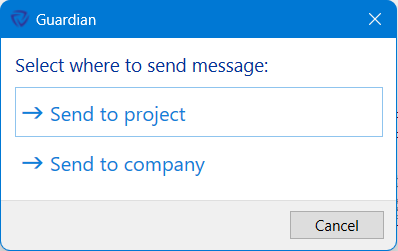
From Projects:
Sending messages through the Projects dialog will permit Company Administrators to select specific projects to send a message to or to send company messages. Project Administrators can select only the projects in which they have been assigned as project administrators. One must select the individual projects or multi-select projects to send the message and then select Send Message.

From Project Central:
Both Company and Project Administrators can send messages directly through Project Central and have the message options as listed above.
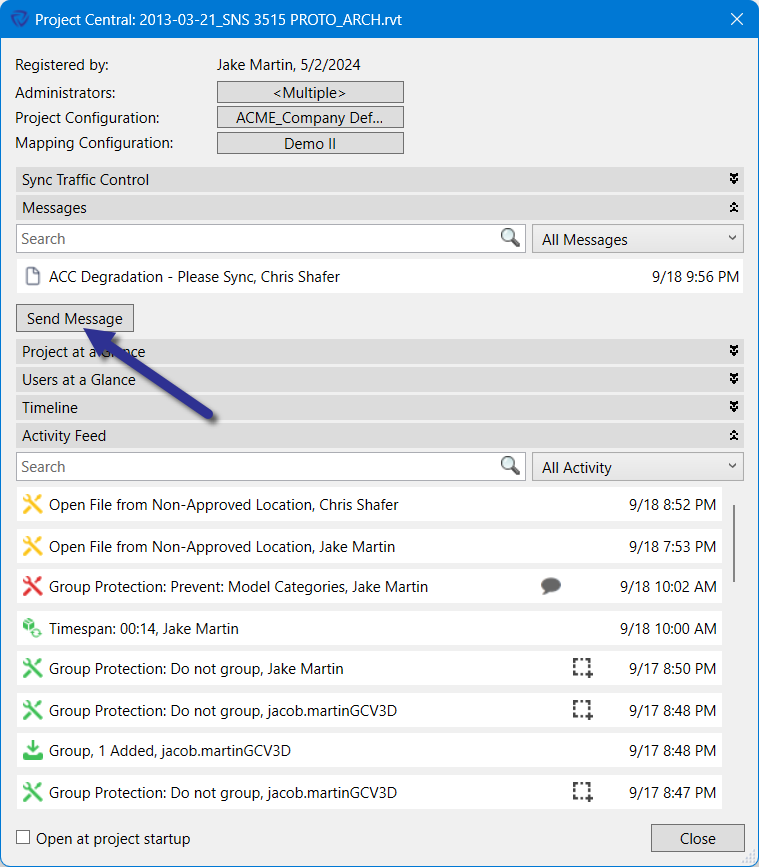
Drafting a Message:
Guardian Messages provides many features to ensure the right message is communicated to your users:
- Enter a subject to display when message prompts are displayed within Revit and Project Central.
- Craft a message within the message editor and customize the font, size, color, style, and formatting.
- Set an expiration date for the message to be automatically removed from View Messages and the Project Central list of sent messages.
- Select the Preview button to see the end-user perspective before hitting send.

- Select the Include Screenshot button to capture a screenshot of the current Revit view that will also serve as a hyperlink to that view when users click on it.
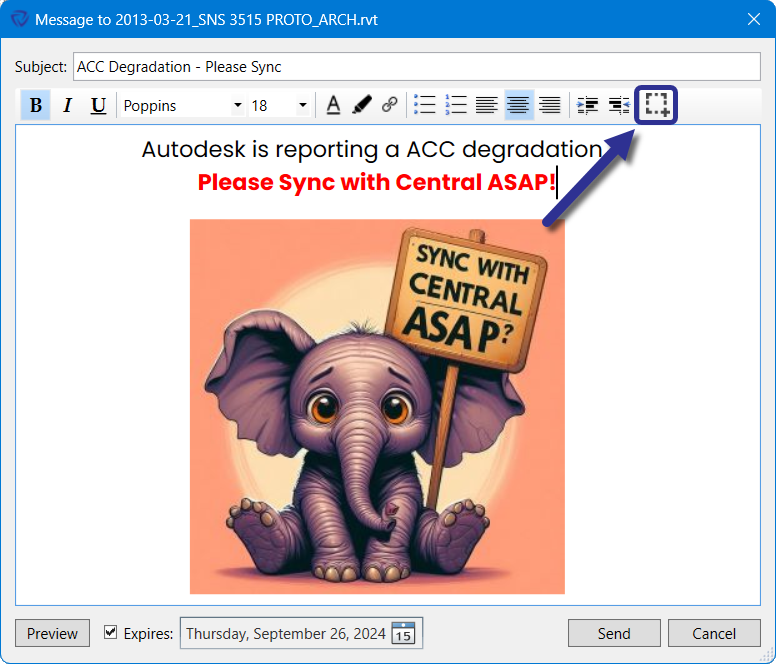
Managing Sent Messages:
Company and Project Administrators will have access to all messages sent and can edit the messages they have sent under the View Messages option.

Company Administrators have the ability to edit all messages and project administrators can edit only messages they have sent. The following editing capabilities are provided and will automatically update any message that has already been sent.
- Edit Message will update when users open the message the next time. User will not be notified when edited message have been modified other than an “Edited” label being applied in View Messages and Project Central.
- Re-send allows administrators to resend the message as if it was a new message.
- Delete will delete the message from View Messages and Project Central.
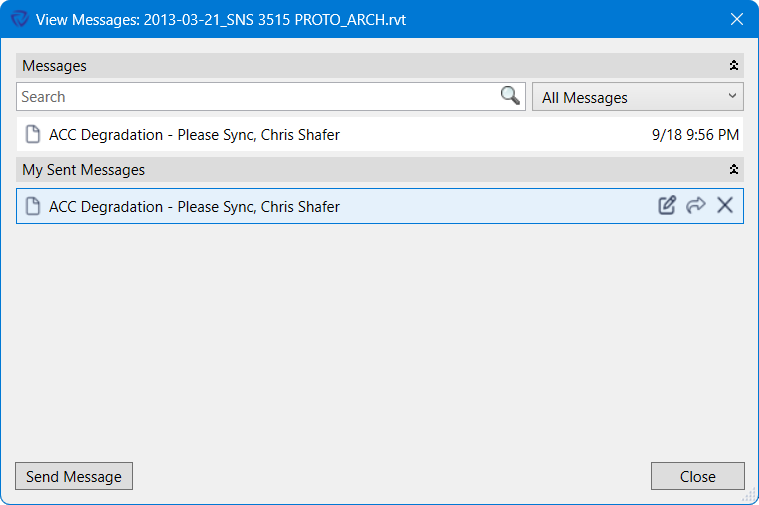
End-user experience:
Getting New, Unread Messages:
Revit users will instantly get a Guardian Message prompt notifying them that they have received a new message. The users will also receive a Windows notification that a message has been sent.

If the user is not in Revit at the time the message was sent, the user will get a prompt saying they have a new unread message next time they open a Revit model.
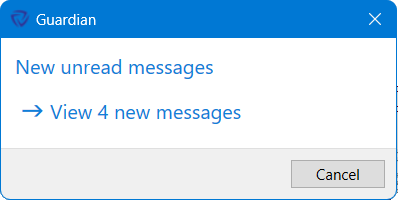
Accessing Past Sent Messages:
Users have two ways to access past messages, View Messages and Project Central. As Project Central is now available to all users, they can access all messages, both Company and Project specific messages.

































































































































































































































































































